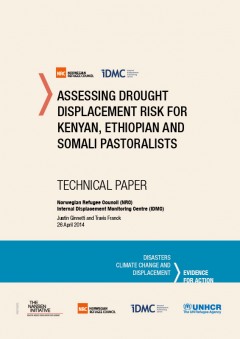Resource information
A new way of thinking This study reflects emerging awareness of the need to see disasters as primarily social, rather than natural, phenomena. Individuals and societies can act and take decisions to reduce the likelihood of a disasters occurring or, at the very least, to reduce their impacts and the levels of loss and damage associated with them. Disasters are thus no longer being perceived as ‘acts of God’ but instead as something over which humans exert influence. This reconceptualisation of disasters signifies a shift from a retrospective, post-disaster approach to an anticipatory way of thinking about and confronting disasters. This conceptual development dates from the UN International Decade of Natural Disaster Reduction in the 1990s and is reflected in the 2005 Hyogo Framework for Action (HFA), a ten-year plan endorsed by the United Nations General Assembly which aims to reduce the risk of disasters globally. One important outcome of the HFA process is awareness that without ability to measure disaster risk it is not possible to know if it has been reduced. In the context of disasters, displacement includes all forced or obliged population movements resulting from the immediate threat of, or actual, disaster situation regardless of length of time displaced, distance moved from place of origin and subsequent patterns of movement, including back to place of origin or re-settlement elsewhere. Based upon existing information and notwithstanding some notable exceptions, the vast majority of people displaced by disasters are assumed to remain within their own country rather than to cross internationally recognised borders to find refuge. Displacement is a disaster impact that is largely determined by the underlying vulnerability of people to shocks or stresses that compel them to leave their homes and livelihoods just to survive. The number of people displaced is, of course, related to the magnitude and frequency of extreme hazard events or processes. The most significant risk factors are those that leave exposed and vulnerable communities without the means to be resilient in the face of such hazards. Informed by this anticipatory way of thinking about disasters, the approach used in this study departs from most existing analyses by examining the myriad climatic, natural and human factors that lead to a displacement outcome. Thus, while the efforts of many governments and other actors continue to emphasise post-disaster and post-displacement response and recovery the following analysis is based on a holistic, systemic conceptualisation of displacement that attempts to provide entry points for humanitarian and protection actors while at the same time presenting information aimed at those responsible for policies around drought risk reduction and risk management and rural development.


